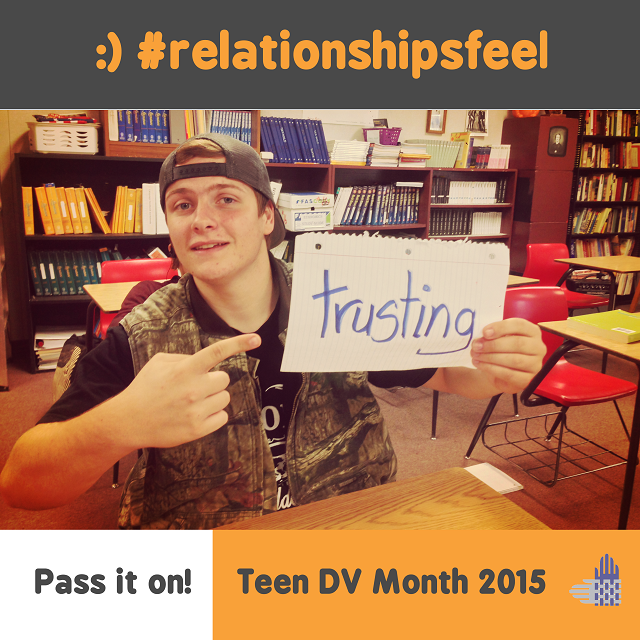Let’s Talk about Red Flags
Working with adolescents calls upon a different skill set then some advocates use every day. When we are addressing adolescent dating abuse we need to change the language and understanding of what is happening within the relationship. Adolescent dating abuse is different than abuse in adult relationships.
We need to trust that young people are the experts in their own lives. Unfortunately some studies reveal that adolescent boys and girls use abusive tactics at high rates within their relationships. Not all of these incidents are equal or even part of a pattern of coercive power and control but we need to be talking about this. While abuse in adolescent relationships is serious, sometimes (not always) it is about a lack of healthy relationship skills. We need to trust their power to change the course of their relationships. Interventions into adolescent relationship abuse need to focus on the development of communication and healthy relationships skills. We need to incorporate discussions of gender equity and gender norms as the foundation of our healthy relationship curriculum.
Generally, discussions on healthy relationships and adolescent dating abuse include providing education on relationship red flags. Unfortunately when I was in the role of educating about adolescent dating abuse I learned a lot through trial and error. When I presented on red flags, I made the mistake simply telling the group a list of red flags. I think my exact words were “these are red flags in relationships” and I listed things like “your partner is constantly texting you”, “jealousy” and “isolates you from friends and family”. As I was presenting the list of red flags I could see half the room quit listening and some openly disagreed with my list of red flags. From this experience I learned how it important it is to facilitate a conversation about red flags. For example, when talking about constantly texting for many young people that is not always a red flag it’s the reality of using technology today. I learned how it important it is to learn from young people about what they would identify as a red flag, where their boundaries are and who they can reach out to for help. I would use questions such as these:
- What is a behavior that concerns you in a relationship?
- What does it mean when we see red flags in a relationship?
- Where are your boundaries in a relationship?
- Who can reach out to for support?
Once I stopped trying to be the expert and learned to facilitate conversations on red flags and boundaries, I found I was much more effective in conveying the importance of healthy relationships skills. Love is Respect offers many resources for adolescent relationships but one of my favorites is the Relationship Spectrum. There are many ways to start a conversation with young people about relationships but it is important that we, as the adults, are starting those conversations.





